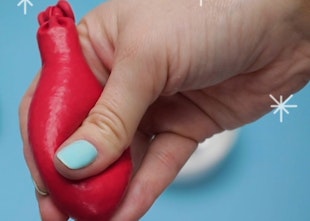After months of lying flat and periods of tummy time, your baby might be ready for a change of scenery. Starting around 3 or 4 months old (or whenever they can hold their head up well and seem interested and ready), propping your baby up to sit with support will give them an amazing new view of the world around them.
After months of lying flat and periods of tummy time, your baby might be ready for a change of scenery. Starting around 3 or 4 months old (or whenever they can hold their head up well and seem interested and ready), propping your baby up to sit with support will give them an amazing new view of the world around them.
The more practice your little one gets holding themselves upright with support, the sooner they’ll discover a love for independence and sitting up unaided, including a better view of their toys, siblings and the world around them.
Once your babies back and neck muscles are strong enough to hold them upright and they have figured out where to put their little legs so they won't topple over, they will be sitting up and ready to play.
When do babies sit up?
It varies from baby to baby, but most babies will be able to sit with help between 3 and 5 months old, either by propping themselves up on their hands or with a little support from you.
By the time they are 6 months old, your baby will probably have developed the neck, upper body and back muscles to be able to sit without support. However, for some infants, the ability to sit unaided can come as late as 9 months.
By 7 months, they may be able to get into a sitting position themselves by pushing up from their stomach, but most babies will need to be helped up into a sitting position until around month 11.
Signs your baby is ready to start sitting up
By 4 months old, your baby will probably be able to hold their head steady when upright, but most babies' heads will still fall back when their upper bodies are pulled up to a sitting position.
Help your baby develop neck and head control by making a game of pulling them up to sit-With baby lying on their back (or your legs), grasp their hands and gently pull them up to sit, funny faces and singing will help them enjoy the ride.
How do I get my baby to sit up?
As soon as they can hold their head up well, you can help encourage your baby to sit by propping them up in a seated position in a seat or in your lap. Changing the pram from the new-born part to a seated position is a great way to get your baby interested in the world around them.
The more practice your baby gets sitting with help, the more likely they are to try sitting up on their own without a pillow to support them.
While they are learning to sit up, make sure to keep them on a blanket or activity mat to cushion any tumbles, and sit close by so that you can catch them if they topple over.
Try placing a toy in front of your baby's feet when they are sitting, and they may end up propping themselves up on their hands as they play with it.
When not to worry about:
As long as you give your baby plenty of opportunities to practice their sitting skills, they will let you know when they are ready to sit up.
If your baby slumps over or slides off to one side even with support, they may not be ready to sit, and you can simply try again later. Babies who are new to sitting up may tire easily, they will let you know when they have had enough by fussing, complaining or slumping.
If your little one doesn't sit with support by the end of month 5, it's not a cause for concern. Every baby develops differently and at their own pace. Some babies sit as early as 4 months, whereas others pick it up as late as 9 months. Just continue to offer plenty of chances to practice sitting with support, and lots of encouragement and distraction while your little one is upright. They will soon get there!
Written by Laura Doyle staff writer at FFHQ who also blogs at www.lovelifeandlittleones.com.






